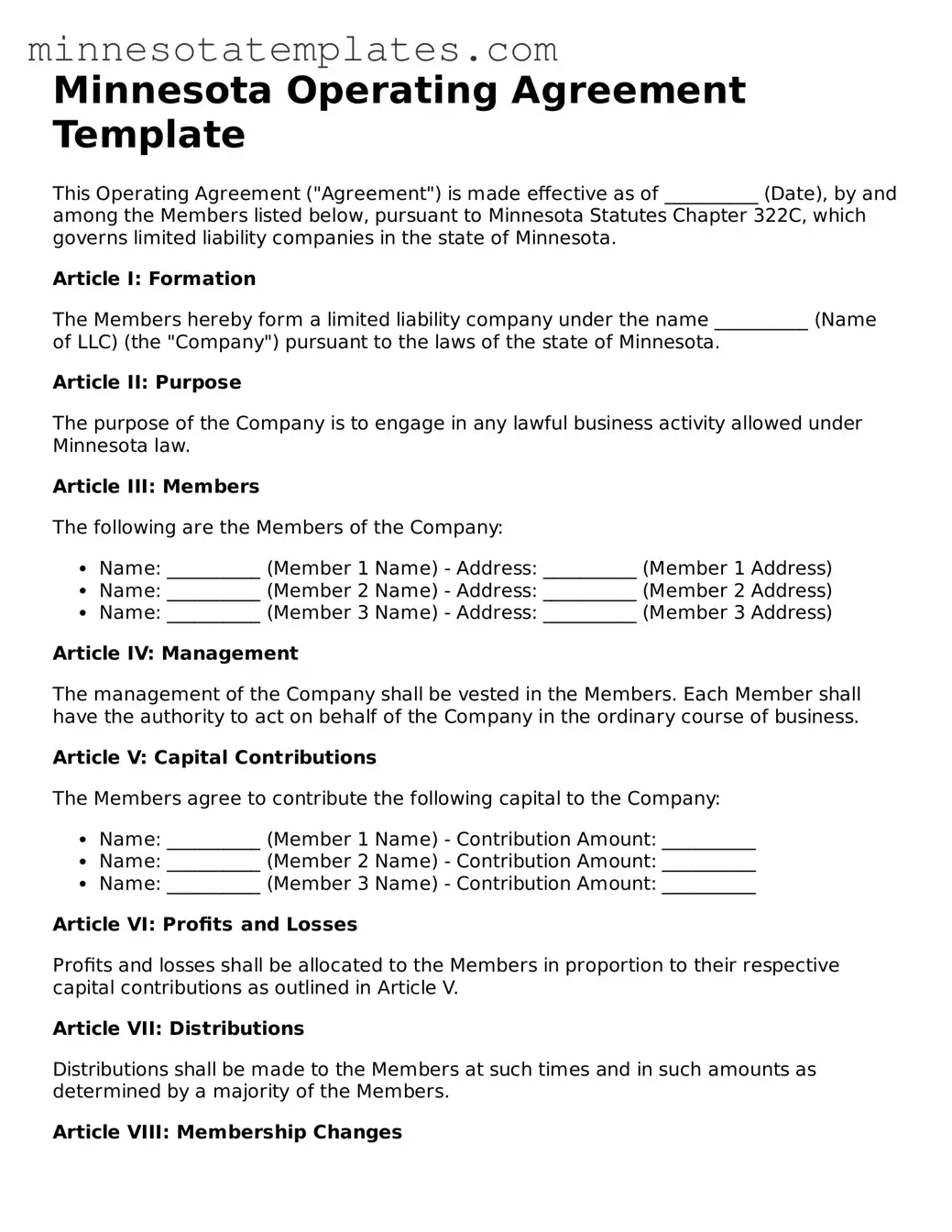Valid Operating Agreement Form for the State of Minnesota
The Minnesota Operating Agreement form is a legal document that outlines the management structure and operational procedures of a limited liability company (LLC) in Minnesota. This form is essential for establishing clear guidelines among members and ensuring compliance with state laws. To get started, fill out the form by clicking the button below.
Access Your Form Now
